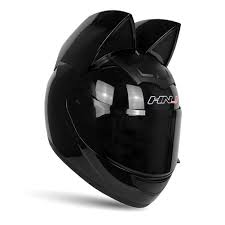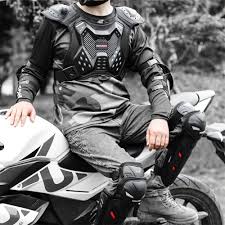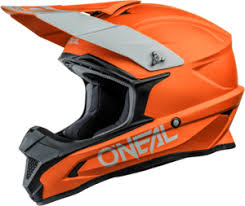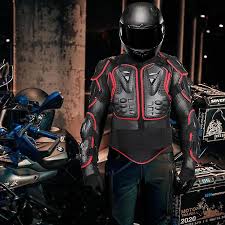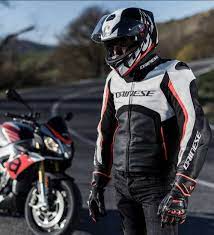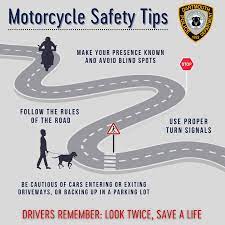
Motorcycle Safety: Riding with Responsibility
Motorcycles have long been associated with a sense of freedom, adventure, and exhilaration. The open road, the wind in your face, and the thrill of maneuvering through traffic – it’s an experience like no other. However, it is crucial to remember that riding a motorcycle also comes with inherent risks. Motorcycle safety should always be a top priority for riders.
First and foremost, wearing appropriate safety gear is vital. A sturdy helmet that meets safety standards can significantly reduce the risk of head injuries in case of an accident. Additionally, wearing protective clothing such as jackets, pants, gloves, and boots made from durable materials can shield riders from abrasions and other injuries.
Another crucial aspect of motorcycle safety is regular maintenance. Before hitting the road, it is essential to check your bike’s tires for proper inflation and tread wear. Faulty brakes or malfunctioning lights can compromise your safety on the road, so make sure to inspect them regularly as well. Keeping your motorcycle in good working condition not only enhances performance but also reduces the likelihood of accidents caused by mechanical failures.
Defensive riding is a fundamental principle of motorcycle safety. Being aware of your surroundings and anticipating potential hazards can help you avoid dangerous situations on the road. Always maintain a safe following distance from other vehicles and be mindful of blind spots. Remember to use your indicators when changing lanes or making turns to communicate your intentions clearly.
Adhering to traffic rules and regulations is essential for every motorcyclist. Speed limits exist for a reason – exceeding them not only puts you at risk but also endangers others sharing the road with you. Obeying traffic signals and signs helps ensure smooth traffic flow and reduces the likelihood of collisions.
One aspect often overlooked by riders is continuous education and training. Even experienced motorcyclists can benefit from refreshing their skills through advanced rider training courses or defensive riding programs. These courses provide valuable insights into hazard perception, emergency maneuvers, and other techniques that can save lives.
Lastly, staying alert and avoiding distractions while riding is crucial. Using mobile phones or other electronic devices while on a motorcycle diverts your attention from the road and increases the chances of accidents. Keep your focus solely on riding to ensure maximum safety.
Motorcycle safety is a shared responsibility between riders, motorists, and pedestrians alike. It requires a collective effort to create an environment where everyone can travel safely. Motorcyclists must ride responsibly, motorists should be aware of motorcycles on the road and give them ample space, and pedestrians should exercise caution when crossing streets.
Remember, motorcycle safety is not about restricting the joy of riding; it’s about embracing it with responsibility. By prioritizing safety gear, regular maintenance, defensive riding, adherence to traffic rules, continuous education, and staying focused on the road, we can all contribute to a safer riding experience for everyone. So let’s hit the road with enthusiasm while keeping motorcycle safety at the forefront of our minds.
7 Essential Tips for Motorcycle Safety in the UK
- Wear appropriate protective gear
- Follow traffic rules
- Stay visible
- Maintain a safe distance
- Perform regular maintenance checks
- Be alert and anticipate hazards
- Continuous learning
Wear appropriate protective gear
Wear Appropriate Protective Gear: Your Shield on Two Wheels
When it comes to motorcycle safety, one tip stands above the rest: wear appropriate protective gear. Riding a motorcycle exposes you to various risks, but donning the right gear can significantly reduce the likelihood and severity of injuries.
The most crucial piece of protective gear for any rider is a high-quality helmet. It’s not just a fashion statement; it’s your shield against head injuries. Invest in a helmet that meets safety standards and fits snugly on your head. It should cover your forehead, sides, and back of the head, providing maximum protection in case of an accident.
Protective clothing is equally important. A sturdy jacket made from abrasion-resistant materials like leather or reinforced textiles can shield your upper body from road rash and impact injuries. Look for jackets with built-in armor at vital areas such as shoulders, elbows, and spine for added protection.
Pants specifically designed for motorcycle riding are essential too. They offer protection to your legs in case of a fall or slide. Choose pants made from durable materials that provide both comfort and protection. Consider options with knee armor for added safety.
Gloves are often overlooked but play a crucial role in protecting your hands during accidents or adverse weather conditions. Opt for gloves that offer a good grip on the handlebars while also providing padding and reinforcement to protect your palms and fingers.
Lastly, invest in proper footwear designed specifically for motorcycle riding. Boots with ankle support, oil-resistant soles, and reinforced toe caps can protect your feet from impact injuries and provide stability while riding.
Wearing appropriate protective gear is not just about complying with regulations; it’s about safeguarding yourself against potential dangers on the road. Accidents can happen unexpectedly, regardless of how skilled or cautious you are as a rider. By wearing proper gear, you enhance your chances of walking away from an accident with minimal injuries.
Remember that protective gear should be worn every time you ride, regardless of the distance or weather conditions. It’s a small investment that can make a world of difference in your safety. So, before you hop on your motorcycle, make sure you’re properly geared up – helmet, jacket, pants, gloves, and boots. Each piece is an essential layer of protection that gives you peace of mind and allows you to fully enjoy the thrill of riding.
Riding a motorcycle is an exhilarating experience, but it’s crucial to prioritize safety. By wearing appropriate protective gear, you’re not only protecting yourself but also setting an example for other riders. So gear up, stay safe, and keep enjoying the freedom of the open road with confidence.
Follow traffic rules
Follow Traffic Rules: Ensuring Safety on Two Wheels
When it comes to motorcycle safety, one of the most important tips is to follow traffic rules diligently. While it may seem like common sense, adhering to these rules can significantly reduce the risk of accidents and ensure a safer riding experience for everyone on the road.
Traffic rules exist for a reason – to maintain order, prevent collisions, and protect all road users. As motorcyclists, we must be responsible and respectful participants in traffic. Here’s why following traffic rules is crucial:
- Avoiding Collisions: Traffic rules provide clear guidelines for navigating intersections, changing lanes, and overtaking other vehicles. By obeying these rules, we can minimize the chances of collisions with other vehicles or pedestrians.
- Enhancing Visibility: Following traffic rules helps us remain visible to other road users. Using indicators when turning or changing lanes allows motorists and pedestrians to anticipate our movements, reducing the risk of accidents caused by sudden surprises.
- Predictability: Consistently following traffic rules makes our actions more predictable to others on the road. This predictability fosters smoother traffic flow and minimizes confusion or misunderstandings between different road users.
- Setting an Example: As motorcyclists, we play a crucial role in shaping public perception about our community. By demonstrating responsible behavior on the road through adherence to traffic rules, we contribute towards fostering positive attitudes towards motorcyclists.
- Legal Consequences: Violating traffic rules can result in fines, penalties, or even legal repercussions such as license suspension or increased insurance premiums. By following traffic laws, we not only protect ourselves but also avoid unnecessary legal troubles.
Remember that motorcycles are smaller and less visible than cars or trucks on the road. Therefore, it’s essential to compensate for this by being extra cautious and vigilant while riding. Following traffic rules ensures that we are doing our part in creating a safer environment for all road users.
So, before you hit the road, take a moment to refresh your knowledge of traffic rules and regulations. Stay updated with any changes in local traffic laws and always ride with a mindset of responsibility and respect for others. By following traffic rules, we can enjoy the thrill of riding while keeping ourselves and others safe on two wheels.
Stay visible
Motorcycle Safety Tip: Stay Visible on the Road
When it comes to motorcycle safety, one of the most crucial tips is to stay visible to other road users. Motorcycles are smaller and less visible than cars, making it essential for riders to take proactive measures to enhance their visibility on the road.
First and foremost, wearing high-visibility gear can make a significant difference. Opt for brightly colored or reflective clothing that stands out, especially during low-light conditions. This makes it easier for other drivers to spot you from a distance and react accordingly.
Another effective way to improve visibility is by ensuring that your motorcycle has functional lights. Regularly check your headlights, taillights, indicators, and brake lights to ensure they are working correctly. Keeping them clean and free from dirt or debris also helps maintain optimal visibility.
Positioning yourself strategically on the road can also enhance your visibility. Avoid riding in blind spots of larger vehicles, as they may not see you when changing lanes or making turns. Instead, position yourself in a way that allows other drivers to have a clear line of sight of you.
Using your horn when necessary can also be an effective method of alerting others to your presence. However, it’s important not to rely solely on the horn as a means of communication; it should be used in conjunction with other visibility-enhancing measures.
Additionally, consider adding reflective tape or decals to your motorcycle’s bodywork or helmet. These reflective surfaces can catch the light and make you more visible at night or in low-light conditions.
Remember that staying visible is not just about being seen; it’s also about being predictable. Maintain a consistent speed and avoid sudden maneuvers that may surprise other road users. Signaling your intentions clearly with hand signals or indicators provides valuable information to those around you.
By prioritizing visibility on the road, motorcyclists can significantly reduce the risk of accidents caused by other drivers failing to notice them. Whether it’s through high-visibility gear, functional lights, strategic positioning, or consistent signaling, staying visible is a simple yet effective way to enhance motorcycle safety.
So, before you hit the road, take a moment to assess your visibility and make any necessary adjustments. Remember, being seen means being safe. Ride with confidence, knowing that you’ve taken steps to ensure your visibility on the road.
Maintain a safe distance
Maintain a Safe Distance: A Key to Motorcycle Safety
When it comes to motorcycle safety, one of the most crucial tips is to maintain a safe distance from other vehicles on the road. Riding too closely to the vehicle in front of you can be extremely dangerous and increases the risk of accidents.
Why is maintaining a safe distance so important? Firstly, it gives you more time to react to any sudden changes in traffic. Motorcycles have shorter stopping distances compared to cars, so having that extra space can provide valuable seconds to avoid collisions.
Secondly, maintaining a safe distance allows for better visibility. By keeping a reasonable gap between you and the vehicle ahead, you have a clearer view of the road ahead and any potential hazards that may arise. This increased visibility helps you anticipate and respond appropriately to changing traffic conditions.
Furthermore, staying at a safe distance minimizes the impact of sudden braking by the vehicle in front. Motorcycles require more skill and control when it comes to braking compared to cars. Keeping adequate space allows for smoother braking without compromising your own safety or that of others around you.
So, how do you ensure a safe distance while riding? A general rule of thumb is to maintain at least a two-second gap between your motorcycle and the vehicle in front. To measure this, choose a fixed point on the road (such as a sign or lamppost) and count how many seconds it takes for your motorcycle to reach that point after the preceding vehicle has passed it.
However, it’s important to adjust this gap depending on various factors such as weather conditions, road surface conditions, and traffic density. In adverse weather or heavy traffic situations, it may be wise to increase your following distance even further.
Remember that maintaining a safe distance not only applies when riding behind other vehicles but also when being overtaken by them. Allow ample space for vehicles overtaking you so they have enough room without endangering your safety.
By adhering to the principle of maintaining a safe distance, you significantly reduce the chances of accidents and create a safer riding environment for yourself and others. It’s a simple yet effective practice that should be an integral part of every motorcyclist’s approach to safety.
So, next time you hit the road on your motorcycle, remember to keep a safe distance. It’s a small action that can make a big difference in ensuring your safety and enhancing your overall riding experience.
Perform regular maintenance checks
Perform Regular Maintenance Checks: Ensuring Safe Rides
When it comes to motorcycle safety, one tip stands out as a vital practice for all riders – performing regular maintenance checks. Just like any other machine, motorcycles require proper care and attention to ensure they are in optimal condition for the road.
Regular maintenance checks encompass a range of tasks that contribute to the overall safety and performance of your bike. One crucial aspect is inspecting the tires. Checking tire pressure and tread wear is essential for maintaining proper traction and stability. Underinflated or worn-out tires can compromise your ability to control the motorcycle, especially during turns or sudden stops.
Another critical area to focus on is the braking system. Regularly check your brake pads for wear and tear, ensuring they have sufficient thickness. Faulty brakes can significantly increase stopping distances and pose a serious risk on the road. Additionally, inspecting brake fluid levels and ensuring there are no leaks is crucial for optimal braking performance.
Keeping an eye on your lights and indicators is also essential for motorcycle safety. Ensure that all lights are functioning correctly, including headlights, taillights, turn signals, and brake lights. Proper visibility on the road is vital both during daylight hours and at night.
Regular oil changes are another maintenance task that should not be overlooked. Clean oil helps lubricate engine components, reducing friction and preventing unnecessary wear. Neglecting oil changes can lead to engine damage or even failure.
Additionally, checking other fluid levels such as coolant and transmission fluid is important for maintaining proper engine temperature and smooth gear shifting.
Inspecting the chain or belt drive system is crucial for smooth power transmission from the engine to the rear wheel. A loose or worn-out chain can affect acceleration, while a damaged belt may lead to sudden failures.
Lastly, don’t forget about routine checks on smaller components such as mirrors, horn, controls (throttle, clutch), cables, and fasteners. Ensuring that everything is in good working order can prevent unexpected malfunctions while riding.
Performing regular maintenance checks not only enhances your safety on the road but also extends the lifespan of your motorcycle. It allows you to identify and address potential issues before they become major problems. If you are unsure about performing maintenance tasks yourself, consult a qualified mechanic or take your bike to a reputable service center.
Remember, motorcycle safety starts with taking care of your machine. By performing regular maintenance checks and addressing any issues promptly, you can enjoy a smoother, safer ride every time you hit the road. So make it a habit to prioritize maintenance and keep your motorcycle in top-notch condition for many enjoyable miles ahead.
Be alert and anticipate hazards
Motorcycle Safety Tip: Be Alert and Anticipate Hazards
When it comes to motorcycle safety, one of the most crucial tips to remember is to be alert and anticipate potential hazards on the road. Riding a motorcycle requires heightened awareness and quick decision-making skills. By staying vigilant and anticipating potential dangers, riders can significantly reduce the risk of accidents.
Being alert means keeping your focus solely on the task at hand – riding. Avoid distractions such as using mobile phones or other electronic devices while on your motorcycle. These distractions divert your attention from the road and can have severe consequences.
Instead, maintain a constant scan of your surroundings. Look ahead, check your mirrors frequently, and be aware of what is happening around you. Anticipate potential hazards such as sudden lane changes by other vehicles, pedestrians crossing the street, or debris on the road. By identifying these hazards early, you can take appropriate action to avoid them.
Developing good hazard perception skills is essential for every motorcyclist. This involves actively looking for clues that may indicate potential dangers ahead. For example, if you notice a car at an intersection with its wheels turned, it could indicate that the driver might make a sudden turn without signaling.
Weather conditions also play a significant role in hazard anticipation. Rainy or foggy weather can reduce visibility and make roads slippery. Adjust your riding style accordingly by reducing speed and increasing following distances to allow for safe braking.
Additionally, understanding traffic patterns can help you anticipate hazards better. For instance, during rush hour traffic or in areas with heavy pedestrian activity, there is an increased likelihood of sudden stops or unexpected movements from other road users.
Remember that defensive riding goes hand in hand with being alert and anticipating hazards. Defensive riding means assuming that others may not see you or may not follow traffic rules properly. By maintaining a safe following distance from other vehicles and positioning yourself strategically on the road, you give yourself more time to react to potential hazards.
Being alert and anticipating hazards is an ongoing process that requires practice and experience. It is a skill that can be honed through continuous education and training. Consider taking advanced rider courses or defensive riding programs to further enhance your hazard perception skills.
By staying alert and anticipating hazards, you empower yourself to make split-second decisions that can save lives. Motorcycle safety is not just about your own actions but also about being aware of the actions of others on the road. So, keep your eyes open, stay focused, and ride with caution to ensure a safe and enjoyable journey every time you hop on your motorcycle.
Continuous learning
Continuous Learning: Enhancing Motorcycle Safety
When it comes to motorcycle safety, one tip stands out above the rest: continuous learning. The world of motorcycling is ever-evolving, and staying updated with the latest techniques, regulations, and safety practices is crucial for every rider.
Motorcycle training courses provide an excellent opportunity for riders to enhance their skills and knowledge. These courses offer a structured curriculum that covers various aspects of riding, including hazard perception, defensive maneuvers, and emergency braking techniques. By enrolling in such programs, riders can gain valuable insights and refine their riding abilities.
Even experienced riders can benefit from advanced training courses. These programs focus on honing advanced riding skills and techniques that go beyond the basics. From mastering cornering techniques to improving control in adverse weather conditions, these courses equip riders with the tools they need to navigate challenging situations safely.
Another avenue for continuous learning is through rider communities and clubs. These groups often organize workshops, seminars, and group rides where experienced riders share their knowledge and experiences with others. Engaging in discussions with fellow enthusiasts allows riders to learn from each other’s perspectives and gain valuable tips for enhancing safety on the road.
Keeping up with changes in traffic laws and regulations is also essential for motorcycle safety. Laws regarding motorcycling can vary from one jurisdiction to another or may be subject to updates over time. Staying informed about these changes ensures that riders are always aware of their rights and responsibilities while on the road.
Reading books, articles, and online resources dedicated to motorcycle safety is another way to continuously learn about best practices. These sources often provide insights into common hazards faced by motorcyclists and offer guidance on how to mitigate risks effectively. By staying informed about the latest research, studies, and safety recommendations, riders can make more informed decisions while riding.
Continuous learning goes beyond theory; it also involves self-reflection after each ride. Taking a moment to analyze your own performance on the road allows you to identify areas for improvement. Did you execute a maneuver flawlessly, or did you feel a bit shaky? Reflecting on your experiences helps identify strengths and weaknesses, enabling you to work on specific skills during future rides.
In conclusion, continuous learning is an essential aspect of motorcycle safety. By actively seeking opportunities to enhance skills and knowledge, riders can stay ahead of potential hazards and make informed decisions on the road. Whether through training courses, engaging with rider communities, staying updated with traffic regulations, or self-reflection after each ride, every effort towards continuous learning contributes to a safer riding experience for all. So let’s embrace the journey of lifelong learning and ride with confidence and competence.
